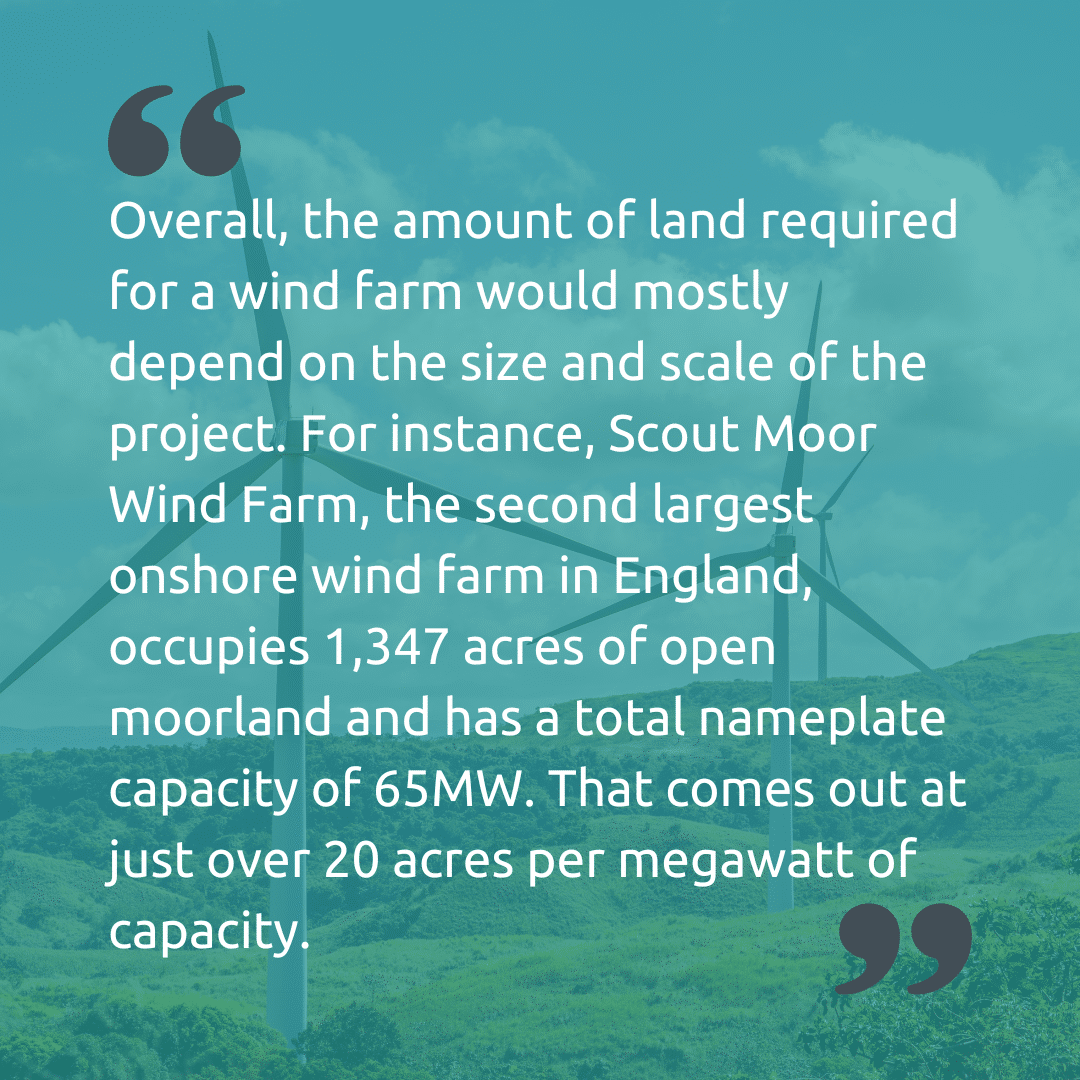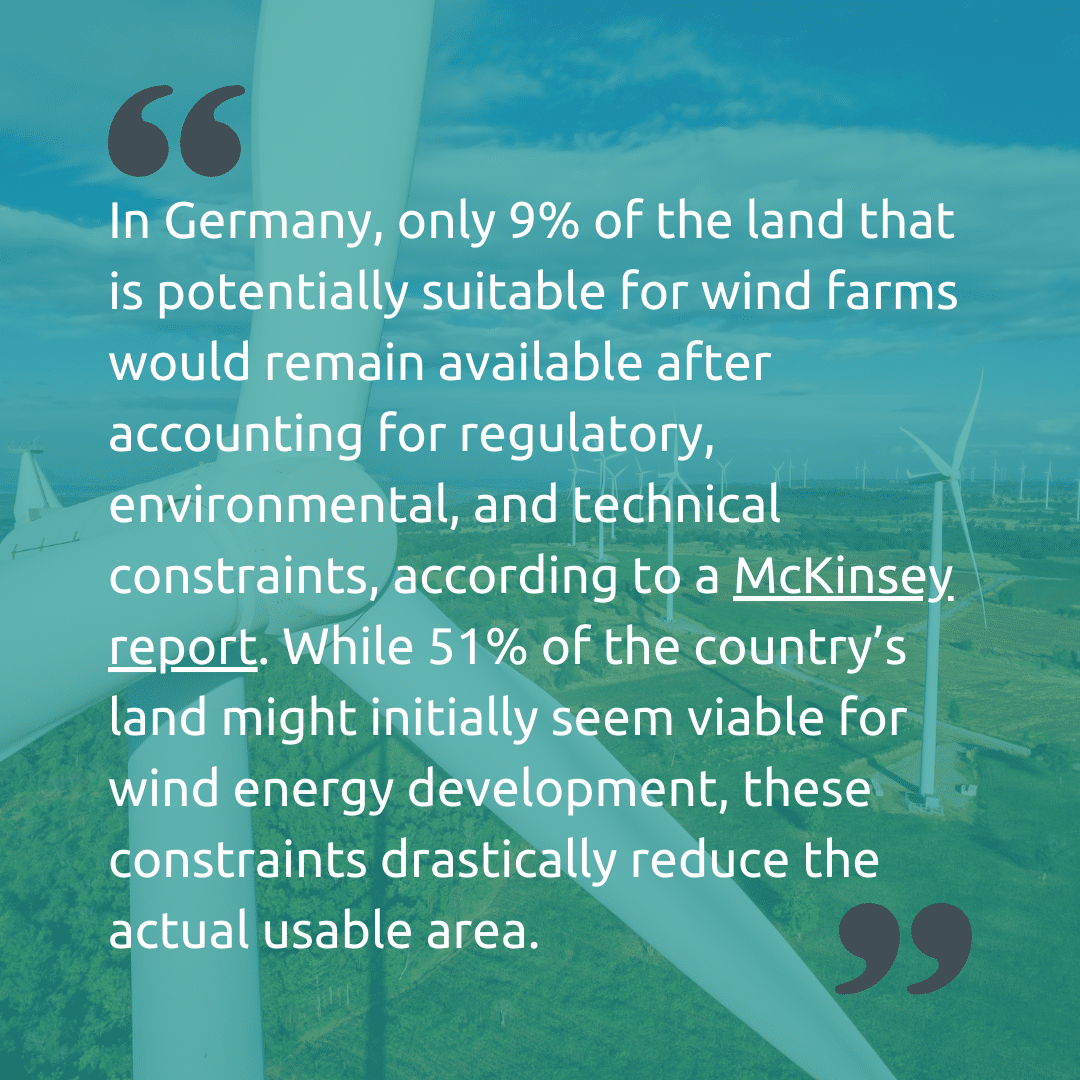There are currently major changes in the energy world happening across the globe that are expected to result in a different but cleaner energy system by the end of the decade. The main goal: to minimize carbon emissions and limit global warming to 1.5°C.
Renewables are now the fastest-growing source of power worldwide, with renewable energy capacity in 2023 recording a 14% increase from the previous year, according to data published in July by the International Renewable Energy Agency (IRENA).
With the continued decline of non-renewable capacity addition, IRENA said clean energy is on its way to overtake fossil fuels in global installed power capacity. However, to stay the course and continue the trend, a higher annual growth rate of at least 16.4% is required to reach the 2030 goal.

Large tracts of land
To meet this demand in electricity coming from renewable sources like onshore wind turbines and additional solar panels, large tracts of land are needed – a lot of it.
For a utility-scale solar farm, solar developers will require at least 10 acres of usable land, or 200 acres for a utility-scale project, according to the Renewable Energy Hub UK. For 1 kilowatt (kW) of solar panels, an area of 100 square feet is required. To determine the viability and success of the project, solar developers would seek clear, flat land, with no wetlands, and minimal incline, about 5 degrees maximum.
Utility-scale wind farms would require at least 200 hectares of land per turbine, based on separation distance of multiplying the blade diameter by a factor of 10, according to the Queensland government report, Queensland Supergrid Infrastructure Blueprint, designed to implement the foundational infrastructure to enable the Australian state to decarbonize the existing electricity system. For 2,700 turbines, a total land area needed is 540,000 hectares.
Overall, the amount of land required for a wind farm would mostly depend on the size and scale of the project. For instance, Scout Moor Wind Farm, the second largest onshore wind farm in England, occupies 1,347 acres of open moorland and has a total nameplate capacity of 65MW. That comes out at just over 20 acres per megawatt of capacity.

Securing locations
In some countries, many of the most attractive locations for renewables development are already taken, in some areas, not much land is available for potential onshore wind or solar development sites.
In Germany, only 9% of the land that is potentially suitable for wind farms would remain available after accounting for regulatory, environmental, and technical constraints, according to a McKinsey report. While 51% of the country’s land might initially seem viable for wind energy development, these constraints drastically reduce the actual usable area. This highlights the significant challenges facing the country’s wind energy expansion, as developers must navigate a complex landscape of regulations and environmental protections to identify and utilize the limited suitable land.
Regulation in some German states plays a significant role in limiting land availability for wind energy development, the report stated. Key factors include rules governing the minimum distance between wind turbines and human settlements, as well as concerns about biodiversity and the protection of animal habitats.
These regulations are likely to remain the main challenges on wind development, even with ongoing discussions about potentially loosening distance requirements. Balancing the expansion of wind energy with environmental and community considerations presents a complex challenge for achieving Germany’s renewable energy targets.
What little land is available for renewables developers could be further reduced by cost considerations and public opposition. With Germany’s target to achieve 100% of its energy from renewable sources by 2035, wind turbines will need to cover 4% to 6% of the country’s land area, leaving developers with very little margin for error, as they must carefully optimize land use, navigate regulatory challenges, and ensure efficient deployment of wind energy infrastructure to meet these stringent goals. The challenge is compounded by the need to balance environmental considerations, community concerns, and the technical demands of large-scale renewable energy production.
Legal, regulatory hurdles
Identifying suitable and attractive locations for wind or solar installations involves more than just assessing the land; it also needs careful consideration of the permitting process and the time it takes to secure the necessary approvals.
This process can be complex and could take some time. It could also often involve multiple government authorities and navigating frequently changing local, state, and federal regulations that govern land use. Many factors in this process are outside of a developer’s immediate control, making it challenging to plan and efficiently execute renewable energy projects. The decentralized nature of the permitting process can lead to delays and uncertainties which can further complicate the development of wind and solar installations. In some instances, permitting can span up to almost a decade, from project start to permits granted.
Moreover, utility-scale solar or wind installations require more than just suitable land; they also need extensive grid infrastructure to transport clean energy to end users. A significant challenge in many countries, including the United States, is that the land most available and suitable for wind and solar development is often far from the densely populated, commercial, and industrial centers that require the most electricity. This geographic disconnect leads to power imbalances. For instance, states like California, Massachusetts, and New York face significant power deficits, ranging from 10 to 40 gigawatt hours, while rural states such as North Dakota, Texas, and Wyoming experience surpluses of 30 to 40 gigawatt hours.
Addressing these imbalances requires building new transmission lines to connect rural renewable energy sources with urban demand centers. However, this process is often lengthy and costly, with additional challenges arising from landowners who oppose having power lines on their property, especially when they don’t directly benefit from the energy being transported. These factors complicate efforts to scale up renewable energy infrastructure and achieve a more balanced and efficient energy distribution system.
Recent actions taken
To facilitate a more rapid energy transition, some countries across the globe are revisiting and reforming their siting and permitting processes.
In the United States, some states and local governments have varying approaches in the siting and permitting of energy projects. Some states centralize authority at the state level, while others delegate it to local governments, or use a hybrid model.
To hasten their siting and permitting processes, Washington’s HB 1812 reforms the existing energy siting commission by separating it from the public utility commission and introducing additional study requirements and engagement processes, according to the World Resources Institute. On the other hand, states like Illinois have enacted more targeted reforms, such as limiting the ability of local entities to restrict renewable energy projects and establishing minimum setback requirements, height limitations, and sound restrictions.
California and New York have recently undertaken more comprehensive permitting reforms, aimed at streamlining the process for renewable energy projects, reducing delays, and ensuring that state clean energy goals are met more efficiently.
To accelerate the permit-granting process for renewable energy projects across the European Union, the block adopted a Council regulation. It seeks to address one of the major bottlenecks in renewable energy development—lengthy and complex permitting procedures. The regulation also reflects the EU’s commitment to overcoming the challenges posed by the geopolitical situation and ensuring a more resilient and sustainable energy future for the region.
Technology can also play a pivotal role in overcoming land acquisition challenges faced by green energy developers, according to data solutions provider LandGate. It can provide tools and solutions that streamline processes, reduce costs, and enhance decision-making.
One of the key technologies is the geographic information systems, which is instrumental in site selection. A project management software can streamline legal and regulatory processes by tracking progress against key milestones, managing documentation, and facilitating communication among team members. Legal tech solutions further enhance efficiency by assisting with due diligence, contract drafting, and compliance checks, making these processes more accurate and less time-consuming. Effective communication tools can also help, like online meeting platforms, social media, and community engagement apps that enable developers to interact more efficiently with landowners, government agencies, and local communities. These tools help share information, address concerns, and build support for projects, ultimately facilitating smoother and more successful land acquisition efforts.
To read other articles we have on renewable energy, please click here.
Looking for a job in the Battery storage industry? Click here to apply now.





